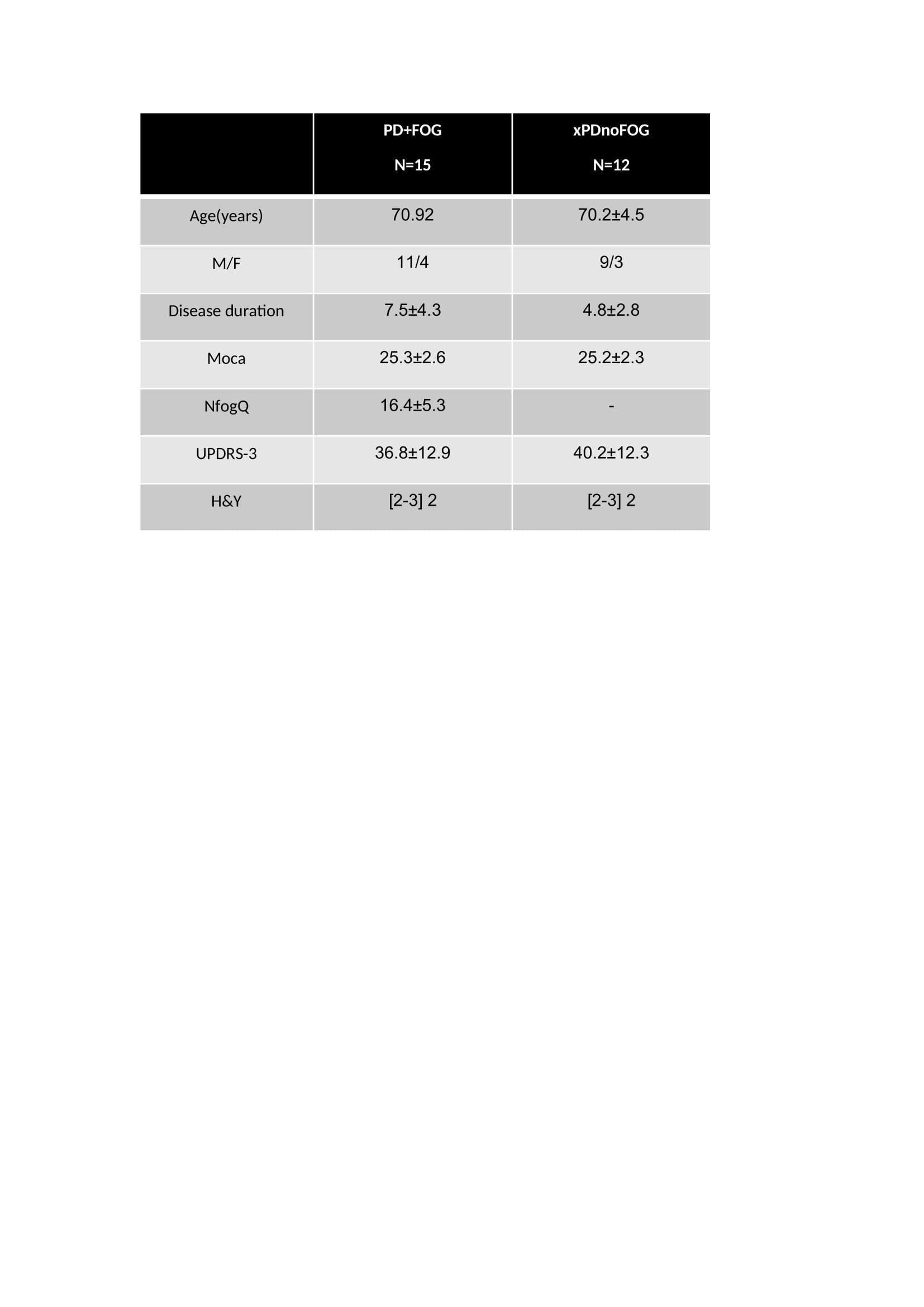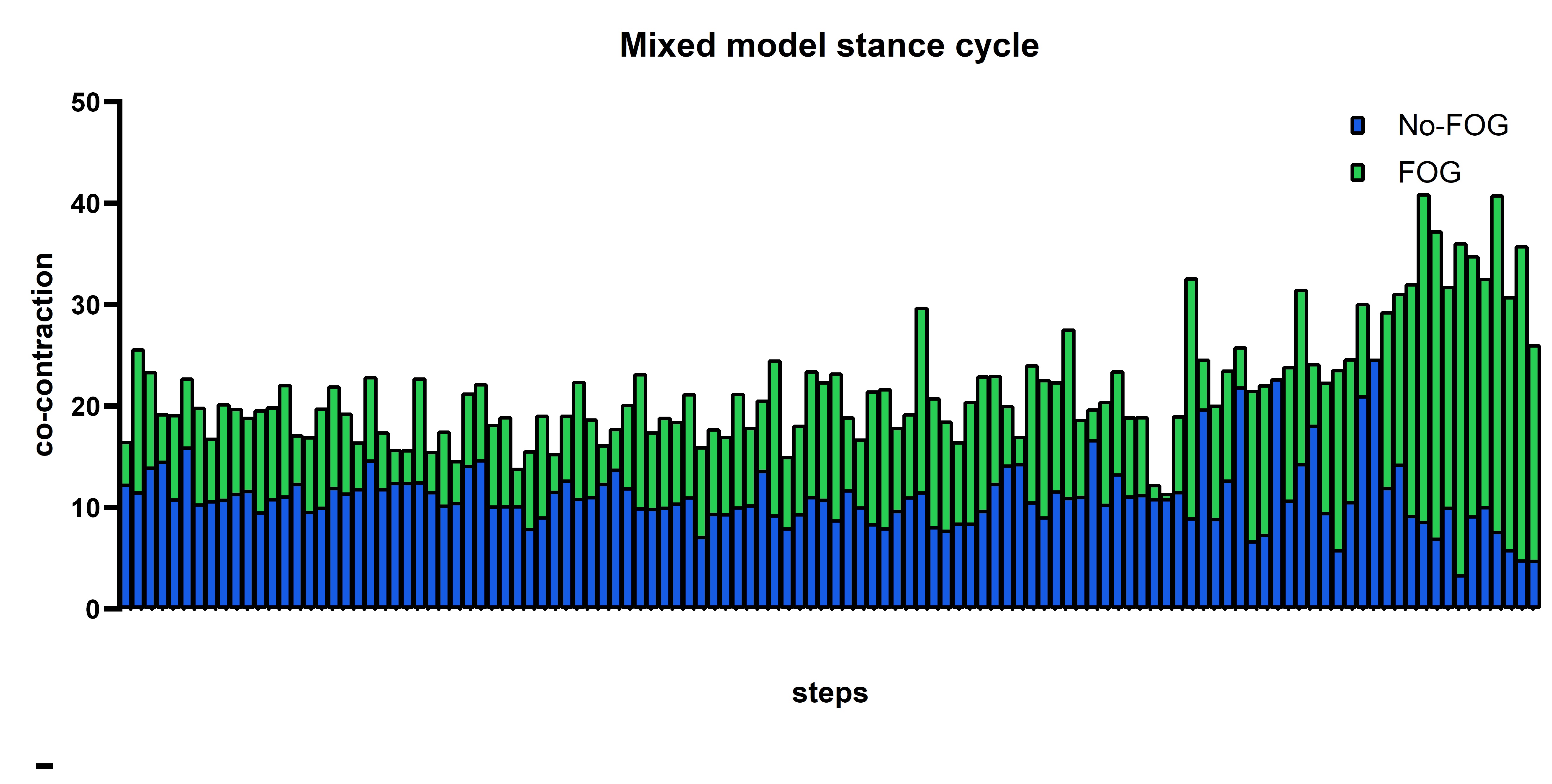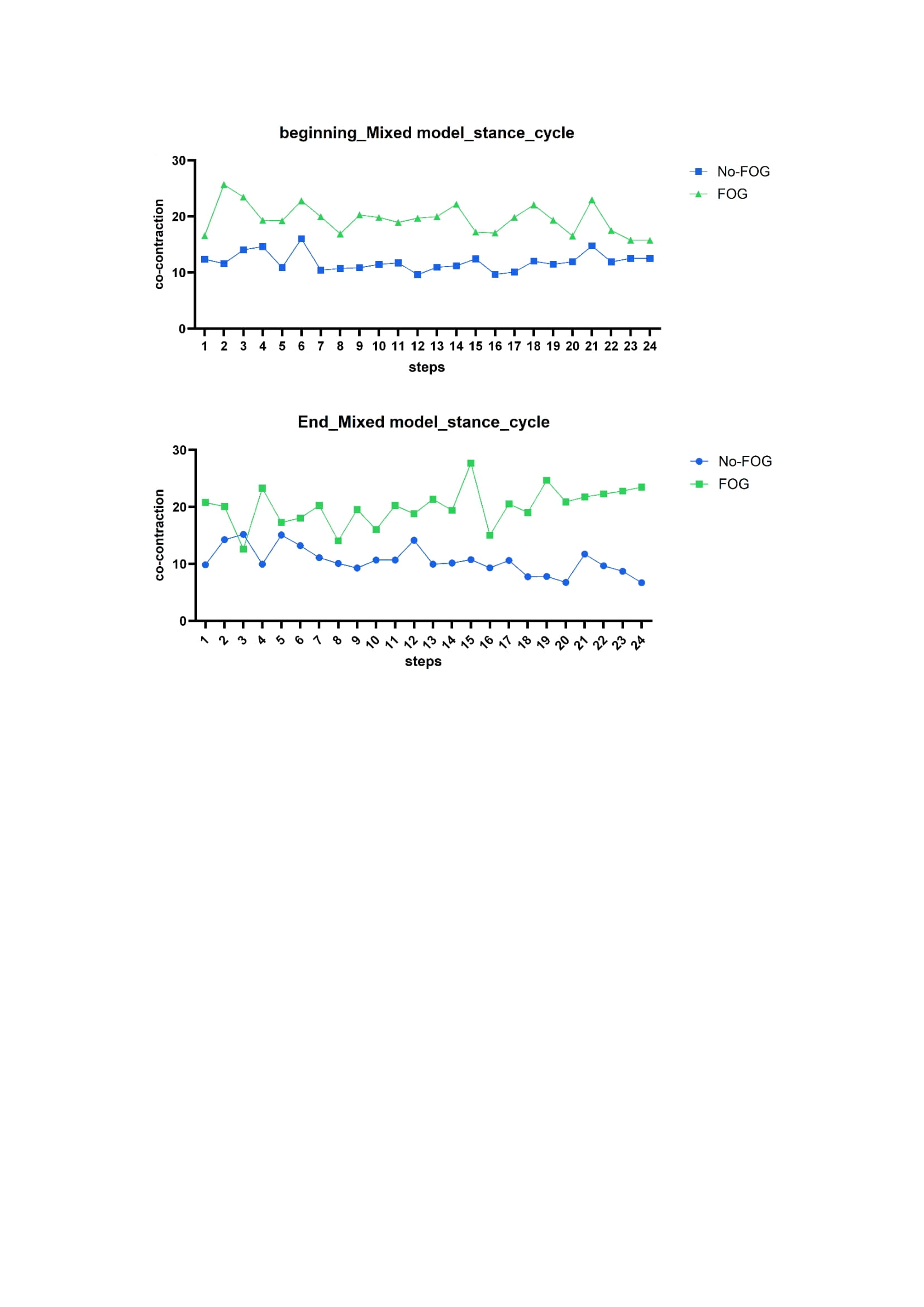Objective: 1) to test the feasibility of using novel, disposable EMG electrodes to study co-contraction (CC) and 2), to test if muscle CC is higher in PD patients with freezing of gait (PD+FOG), compared to PD with no FOG (PDnoFOG) during walking and turning.
Background: Previous work suggested that FOG is associated with CC, however, those studies tested CC during FOG. Here, we aimed to compare CC in PD+FOG to PDnoFOG during walking and turning without FOG, a common provoker of FOG.
Method: We used a wireless EMG system and accelerometers at the Tibialis anterior (TA) and gastrocnemius (GS). An acquisition unit transferred the data to an Android app via Bluetooth. The EMG was segmented into gait cycles based on a pattern-matching algorithm applied to accelerometer data. 27 patients with PD were studied [table1]: 12 PDnoFOG (age=70.2±4.4; 9 men; MDS UPDRS3=40.2±12.3; MOCA=25.2±2.3; H&Y=2 [2-3]) and 15 PD+FOG (age=70.9±8.8; 11 men; MDS UPDRS3=36.9±12.9; MOCA=25.3±2.5; H&Y=2 [2-3]). The subjects completed a 2-minute walking test in a corridor and 360° turns, both single and dual task (serial subtraction of 3). CC of the two muscles was obtained from the cleaned and segmented EMG data, defined as the % time when both muscles were activated for each gait cycle, during stance.
Results: A mixed effect model revealed no time effect (p=0.5) but a group effect (p=0.037). PD+FOG had higher CC (18.4±3.7%) vs. PDnoFOG (9.7±3.2%) (Difference of means 8.7%, 95% CI: 0.54%-16.7%) [figure1]. When analyzing the first and last 25 steps, in the last steps group effect (p=0.02) was found but no time effect (p=0.5), however there was an interaction between both (P=0.004) but not in the first steps (p=0.8)[figure2]. Surprisingly, during the turns, CC was similar (p=0.3) in PD+FOG (20.7±12.3%) and PDnoFOG (18.5±8.5%).
Conclusion: A novel EMG system using disposable, wireless electrodes can quantify CC. Given that CC was higher in PD+FOG, compared to PD-FOG during the stance phase, this abnormal CC might set the stage for a FOG event or might be a compensatory attempt unrelated to FOG triggers. However, the absence of a group difference during turning is somewhat puzzling. The results also raise the possibility that fatigue may increase CC in PD+FOG. Daily living study of CC and fatigue, during straight-line walking and turns, may provide more insights into the complex relationship between FOG, fatigue, FOG triggers, and real-world mobility.
table 1
figure 1
figure 2
To cite this abstract in AMA style:
D. Buzaglo, P. Gandhi, Y. Hanein, J. Hausdorff. Muscle co-contraction in people with Parkinson’s disease suffering from freezing of gait [abstract]. Mov Disord. 2024; 39 (suppl 1). https://www.mdsabstracts.org/abstract/muscle-co-contraction-in-people-with-parkinsons-disease-suffering-from-freezing-of-gait/. Accessed April 1, 2025.« Back to 2024 International Congress
MDS Abstracts - https://www.mdsabstracts.org/abstract/muscle-co-contraction-in-people-with-parkinsons-disease-suffering-from-freezing-of-gait/



